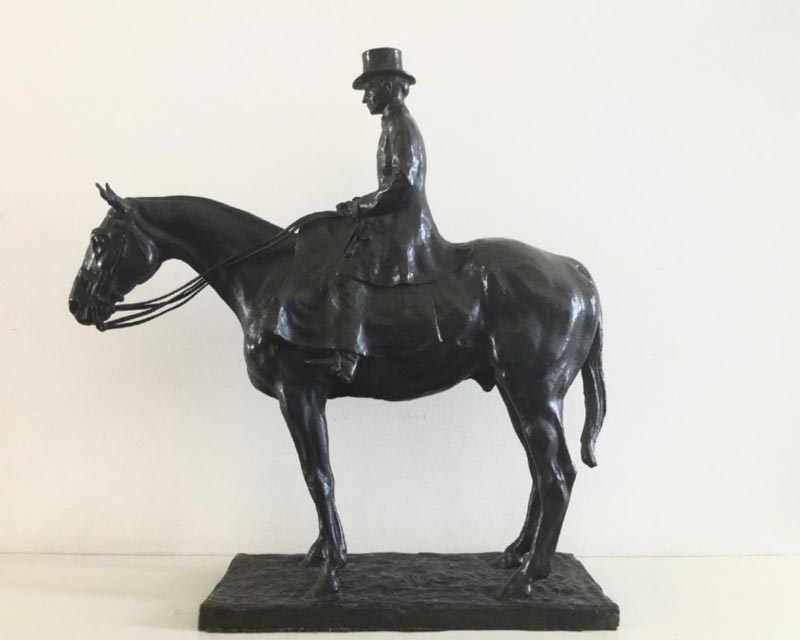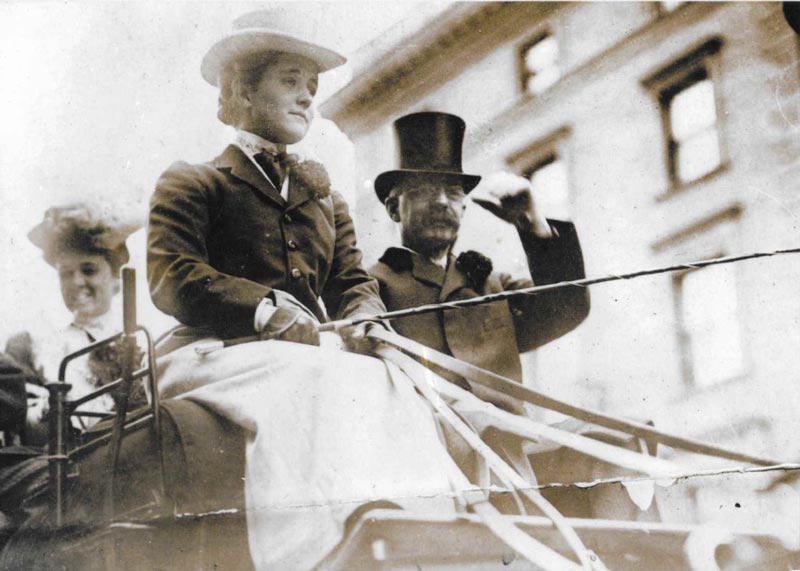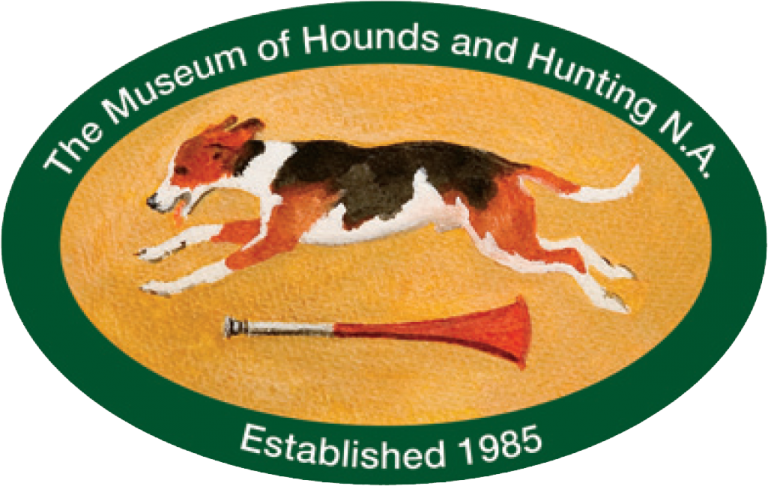
Surrounded by highly creative individuals, the artist Charles Cary Rumsey thrived during his childhood, showing great promise even at a young age, his sculptures later being described as showing an abundance of “life”. This talent spurred his parents to take him to Paris to be educated further in sculpture and resulted in a two year apprenticeship (1893-1895) under the American expatriate sculptor Paul Wayland Bartlett. Returning to the US to complete school and later attend Harvard, he became a member of its prestigious Porcellian Club, where sculpted R.B. Lewis, the chief steward of the club. Returning to Paris, he studied at the Academies Julian and Colarossi under advisement from the animalier, Emmanuel Fremiét (1824-1910), who concentrated on equine figures. Upon returning to NYC, production was slow at first but ultimately drew the attention of Thomas Hastings, who found Rumsey his first commission for Edward H. Harriman, the railroad magnate.
While working on the sculptures for Harriman’s manor home in Arden, NY, Rumsey met his future wife, Cornelia’s sister, Mary Harriman (1881–1934) with whom he had three children: Charles Cary Rumsey Jr., Mary Averell Harriman Rumsey, and Bronson Harriman Rumsey. His work for Harriman included a large, Plains Indian focused, limestone relief for above a fireplace, several gargoyles, and a large bronze fountain for the terrace, The Three Graces, later placed at
Forest Lawn where Rumsey is interred.
Shortly after marrying Mary Harriman, he began sculpting a number of pieces which were dabbling in different artistic currents of the time. Among these is The Wave (around 1910) as well as a sidesaddle bronze sculpture of Cornelia Averell Harriman Gerry (1884-1966), currently in the possession of Nancy G. Bedford, Cornelia’s granddaughter.
In 1913, Rumsey’s work was included in the Armory Show in New York which is credited as being the first major introduction of modern art to America. His works in this show exhibit his range of skill, stretching into modernism in spite of being classically trained. He also exhibited at The Sculptor’s Gallery in 1917, which significantly increased his reputation and brought critical attention to his work. These highly renowned exhibitions were vital for artists at that time to draw the attention of the men who were responsible for commissioning monumental works, proven in 1913 when Rumsey was invited to present a large equestrian statue of Pizarro for the last Panama-Pacific Exposition in San Francisco, 1915. This 19-foot colossus was only a temporary statue, which was taken down with the rest of the Panama-Pacific Exposition palaces. The bronze model Rumsey sculpted still exists and several other versions were made at later
dates, including one presented in 1929 in Trujillo, Spain, another presented in 1934 in Lima, Peru, as well as at The Albright Art Gallery in Buffalo, NY in 1952. After Pizarro, Rumsey moved in a completely different direction after he received a commission in 1916 for the Manhattan Bridge frieze.
In 1917, he sculpted the Old Virginian which Charles Rumsey III donated to The Museum of Hounds and Hunting in 1986. Given how it represented the original farmer-fox hunters, it is considered to be the most important piece in the collection. Moving away from the Beaux-Arts style, he constructed Pagan in 1919, which is unlike any of his other work. His later works are figurative and show far fewer equine subjects.
Cornelia Harriman, daughter of Mary Averell and Edward H. Harriman. Several of her siblings were William Averell Harriman, Mary Williamson Rumsey, and Carol Harriman Penn Smith. She married Robert Livingston Gerry (1877-1957) (MFH Orange Co. Hunt [1908-1920] with William Skinker Jr.)
Robert and Cornelia had four sons, who were all high-goal polo players in the ’30s and ’40s, and served in WWII in the Army Air Force intelligence abroad. Cornelia rode and hunted sidesaddle, and was an accomplished four-in-hand whip, coaching in NYC. Cornelia’s sister, Mary Williamson Harriman, married Charles Cary Rumsey in 1910 and Rumsey later sculpted the sidesaddle bronze that I own and cherish.
Cornelia and her husband, Robert L. Gerry, both from New York families, built a mansion and a thoroughbred stud farm in the Catskills which they named “Aknusti”. Robert shared this 7,000-acre upstate, inherited, Livingston land grant on Lake Delaware, Delhi, NY with his brother Peter Goelet Gerry and a sister Angelica Livingston Gerry. Peter as the eldest had inherited the original “Lake House” and bred Gurnsey dairy cattle. Angelica built “Ancrum,” a summer mansion with extensive formal gardens as well as a beautiful stone Episcopal Church. Robert built “Aknusti” on a mountain side with an elaborate stable, inside track stalls and a center courtyard. Both he and his wife were both were so interested in Thoroughbred lineage; It was their passion.



